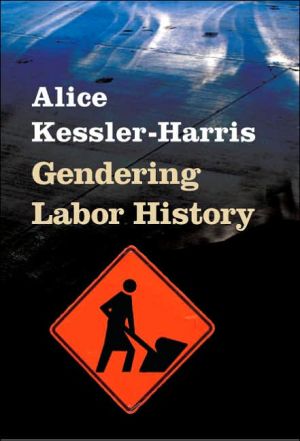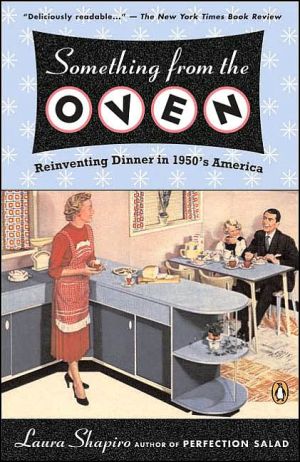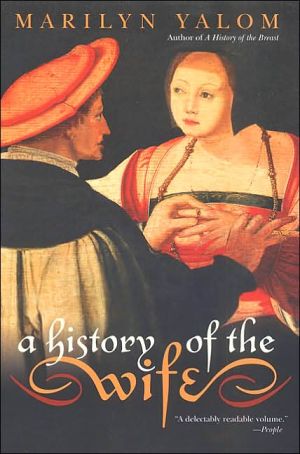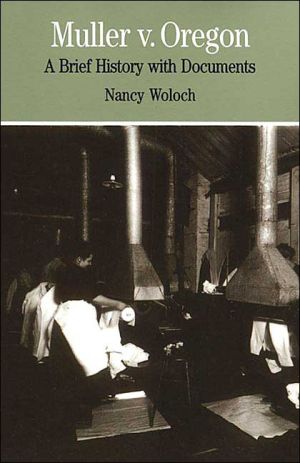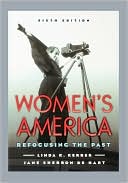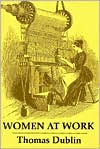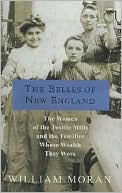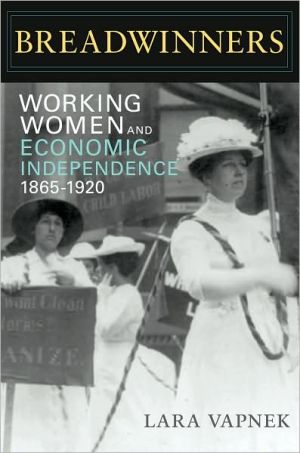Gendering Labor History
This collection represents the thirty-year intellectual trajectory of one of today's leading historians of gender and labor in the United States. The seventeen essays included in Alice Kessler-Harris’s Gendering Labor History are divided into 4 sections, narrating the evolution and refinement of her central project: to show gender’s fundamental importance to the shaping of U.S. history and working-class culture. \ \ The first section considers women and organized labor; the second...
Search in google:
The role of gender in the history of the working class world.
Gendering Labor History\ \ By Alice Kessler-Harris \ University of Illinois Press\ Copyright © 2007 University of Illinois Press\ All right reserved.\ ISBN: 0-252-03149-0 \ \ \ Chapter One\ "Where Are the Organized Women Workers?" \ "The organization of women," wrote Fannia Cohn, an officer of the International Ladies' Garment Workers' Union (ILGWU), to William Green, the newly elected president of the American Federation of Labor (AFL), "is not merely a moral question, but also an economic one. Men will never be certain with their conditions unless the conditions of the millions of women are improved." Her letter touched a home truth and yet in 1925, the year in which the letter was written, the AFL, after nearly forty years of organizing, remained profoundly ambivalent about the fate of more than eight million wage-earning women.\ During these four decades of industrial growth, the women who worked in the industrial labor force had not passively waited to be organized. Yet their best efforts had been tinged with failure. Figures for union members are notoriously unreliable, and estimates fluctuate widely. But something like 3.3 percent of the women who were engaged in industrial occupations in 1900 were organized into trade unions. As low as that figure was, it was to decline even further. Around 1902 and 1903 trade-union membership among women began to decrease, reaching a low of 1.5 percent in 1910. Then, a surge of organization among garment workers lifted it upwards. Areasonable estimate might put 6.6 percent of wage-earning women into trade unions by 1920. In a decade that saw little change in the relative proportion of female and male workers, the proportion of women who were trade-union members quadrupled, increasing at more than twice the rate for trade-union members in general. Even so, the relative numbers of wage-earning women who were trade-union members remained tiny. One in every five men in the industrial workforce belonged to a union, compared to one in every fifteen women. Although more than 20 percent of the labor force was female, less than 8 percent of organized workers were women. And five years later, when Fannia Cohn was urging William Green to pay attention to female workers, these startling gains had already been eroded.\ Figures like these have led historians of the working class to join turn-of-the-century labor organizers in lamenting the difficulty of unionizing female workers. Typically, historians argue that the traditional place of women in families, as well as their position in the workforce, inhibited trade unionism. Statistical overviews support these arguments. At the turn of the century, most wage-earning women were young, temporary workers who looked to marriage as a way to escape the shop or factory; 85 percent of these women were unmarried, and nearly half were under twenty-five years old. Most women worked at traditionally hard-to-organize unskilled jobs: a third were domestic servants, and almost one quarter worked in the garment and textile industries. The remainder were scattered in a variety of industrial and service jobs, including the tobacco and boot and shoe industries, department stores, and laundries. Wage-earning women often came from groups without a union tradition: about half of all working women were immigrants or their daughters who shared rural backgrounds. In the cities, that figure sometimes climbed to 90 percent.\ For all these reasons, women in the labor force unionized with difficulty. Yet dramatic fluctuations in the proportions of organized working women testify to their potential for organization. And the large numbers of unions in which the proportion of women enrolled exceeded their numbers in the industry urge us to seek further explanations for the small proportions of women who actually became union members.\ No apparent change either in the type of women who worked or in the occupational structure explains the post-1902 decline in the proportion of unionized women. On the contrary, several trends suggest the potential for a rise in their numbers. The decline began at the point when union membership was increasing dramatically after the devastating depression of 1893-97. The proportion of first-generation immigrant women who were working dropped after the turn of the century, only to be matched by an increase in the proportion of their Americanized daughters who worked. Married women entered the labor force in larger numbers, suggesting at once a more permanent commitment to jobs and greater need for the security unions could provide. Large declines in the proportion of domestic workers reduced the numbers of women in these isolated, low-paying, and traditionally hard-to-organize jobs. At the same time, increases in office and clerical workers, department-store clerks, and factory operatives offered fertile areas for promoting unionization among women. Strenuous organizing campaigns by and among women in all these areas achieved few results.\ Although cultural background, traditional roles, and social expectations hindered some unionizing efforts, they were clearly not insurmountable barriers. Given a chance, women were devoted and successful union members, convinced that unionism would serve them as it seemed to be serving their brothers. In the words of a seventeen-year-old textile worker, "We all work hard for a mean living. Our boys belong to the miners' union so their wages are better than ours. So I figured that girls must have a union. Women must act like men, ain't?" In the garment workers' union, where the majority of members were women, they often served as shop "chairladies" and reached positions of minor importance in the union structure. Faigele Shapiro recalled how her union activity began at the insistence of a business agent but quickly became an absorbing interest. In these unions, women arrested on picket lines thought highly enough of the union to try to save it bail money by offering to spend the night in jail before they returned to the line in the morning.\ In mixed unions, women often led men in militant actions. Iowa cigar makers reported in 1899 that some striking men had resumed work, while the women were standing pat. Boot and shoe workers in Massachusetts were reported in 1905 to be tough bargainers. "'It is harder to induce women to compromise,'" said their president. "'They are more likely to hold out to the bitter end ... to obtain exactly what they want.'" The great uprising of 1909, in which twenty thousand women walked out of New York's garment shops, occurred over the objections of the male leadership, striking terror into the hearts of Jewish men afraid "of the security of their jobs." Polish "spool girls" protesting a rate cut in the textile mills of Chicopee, Massachusetts, refused their union's suggestion that they arbitrate and won a resounding victory. Swedish women enrolled in a Chicago Custom Clothing Makers local lost a battle against their bosses' attempts to subdivide and speed up the sewing process when the largely male United Garment Workers union agreed to the bosses' conditions. The bosses promptly locked out the women, forcing many to come to terms and others to seek new jobs. At the turn of the century, female garment workers in San Francisco and tobacco strippers, overall makers and sheepskin workers, and telephone operators in Boston ran highly successful sex-segregated unions.\ If traditional explanations for women's failure to organize extensively in this period are not satisfying, they nevertheless offer clues to understanding the unionization process among women. They reveal the superficiality of the question frequently asked by male organizers and historians alike: Why don't women organize? And they encourage us to adopt the economist Theresa Wolfson's more sensitive formulation: "Where are the organized women workers?" When we stop asking why women have not organized themselves, we are led to ask how women were, and are, kept out of unions.\ The key to this question lies in looking at the role that wage-earning women have historically played in the capitalist mode of production. Most women entered the labor force out of economic necessity. They were encouraged by expanding technology and the continuing division of labor, which in the last half of the nineteenth century reduced the need for skilled workers and increased the demand for cheap labor. Like many immigrants and African Americans today, women formed a large reservoir of unskilled workers. But they offered employers additional advantages. They were often at the mercy of whatever jobs happened to be available in the towns where their husbands or fathers worked, and they willingly took jobs that offered no access to upward mobility. Their extraordinarily low pay and exploitative working conditions enabled employers to speed up the process of capital accumulation. Women's labor was critical to industrial expansion, yet they were expected to have few job-related aspirations and to look forward instead to eventual marriage. Under these circumstances, employers had a special incentive to resist unionization among women. As John Andrews put it in the 1911 Report on the Condition of Women and Child Wage Earners: "[T]he moment she organizes a union and seeks by organization to secure better wages she diminishes or destroys what is to the employer her chief value."\ If the rising numbers of working women are any gauge, women for the most part nicely fulfilled the expectations of employers. Traditional social roles and the submissive behavior expected of women with primary attachments to home and family precisely complemented the needs of their bosses. Unionization came more easily to those women whose old-world or American-family norms encouraged more aggressive and worldly behavior-Russian Jews, for example. Yet, for the most part, women fought on two fronts: against the weight of tradition and expectation, and against employers. If that were not enough, there was yet a third battlefront.\ Unionists, if they thought about it at all, were well aware of women's special economic role. Samuel Gompers, the head of the AFL, editorialized in 1911 that some companies had "taken on women not so much to give them work as to make dividends fatter." In a competitive labor market, unionists tended to be suspicious of women who worked for wages and to regard them as potentially threatening to men's jobs. "Every woman employed," wrote an editor in the AFL journal American Federationist, "displaces a man and adds one more to the idle contingent that are fixing wages at the lowest limit."\ Since employers clearly had important economic incentives for hiring women, male trade unionists felt that they had either to eliminate that incentive or to offer noneconomic reasons for restricting women's labor-force participation. In the early 1900s they tried to do both. To reduce the economic threat, organized labor repeatedly affirmed a commitment to unionize women wage earners and to extract equal pay for them. Yet trade unionists simultaneously argued that women's contributions to the home and their duties as mothers were so valuable that women ought not to be in the labor force at all. Their use of the home-and-motherhood argument had two negative effects: it sustained the self-image on which the particular exploitation of women rested, and it provided employers with a weapon to turn against the working class as a whole.\ Buttressed by the grim realities of exploitative working conditions and the difficulties of caring for children while working ten or more hours a day and supported by well-intentioned social reformers, the argument to eliminate women from the workforce held sway. It was, of course, impossible to achieve, so the AFL continued to organize women and to demand equal pay for equal work. But genuine ambivalence tempered its efforts. The end result was to divide the working class firmly along gender lines and to confirm women's position as a permanently threatening underclass of workers who finally resorted to the protection of middle-class reformers and legislators to ameliorate intolerable working conditions. The pattern offers us some lessons about what happens to the workforce when one part of it attacks another.\ The published sources of the AFL reveal some of the attitudes underlying its actions, and I have focused attention on these because I want to illustrate not only how open and prevalent the argument was, but because the AFL's affiliated unions together constituted the largest body of collective working-class opinion. We have amassed enough evidence by now to know that the AFL was a conservative force whose relatively privileged members sacrificed the larger issues of working-class solidarity for a piece of the capitalist pie. In the creation of what the labor economist Selig Perlman called "a joint partnership of organized labor and organized capital," the Federation cooperated extensively with corporation-dominated government agencies, sought to exclude immigrants, and supported an imperialist foreign policy. Its mechanisms for dealing with the huge numbers of women entering the labor force are still unclear. Yet they are an integral part of the puzzle surrounding the interaction of ideological and economic forces in regulating labor-market participation.\ In the period from 1897 to 1920, the AFL underwent dramatic expansion. It consolidated and confirmed its leadership over a number of independent unions, including the dying Knights of Labor. Membership increased from about 265,000 members in 1897 to more than four million by 1920 and included four-fifths of all organized workers. In the same period, the proportion of women working in the industrial labor force climbed quickly. Rapid and heady expansion offered a golden opportunity for organizers. That they didn't take advantage of it is one of the most important facts in the history of labor organizing in America.\ Union leaders were sure that women did not belong in the workforce. Anxious about losing jobs to these low-paid workers, they tried to drive women out of the labor force. "It is the so-called competition of the unorganized defenseless woman worker, the girl and the wife, that often tends to reduce the wages of the father and husband," proclaimed Samuel Gompers. The American Federationist was filled with tales of men displaced by women and children. "One house in St. Louis now pays $4 per week to women where men got $16," snapped the journal in 1896. "A local typewriter company has placed 200 women to take the place of unorganized men," announced an organizer in 1903.\ The Federation's fears had some basis. In the late nineteenth and early twentieth centuries, new technology and techniques of efficiency pioneered by Frederick Taylor eroded the control and the jobs of skilled workmen, replacing them with managerial experts and the unskilled and semiskilled. Skilled members of the AFL who might appropriately have directed their anger at the way technology was being manipulated lashed out instead at women who dared to work. Gompers offers a good example of this. In an article published in 1904, he declared, "The ingenuity of man to produce the world's wealth easier than ever before, is utilized as a means to pauperize the worker, to supplant the man by the woman and the woman by the child." Some of the least appropriate bitterness was expressed by Thomas O'Donnell, the secretary of the National Spinners Union, whose constituency, once largely female, had been replaced by men after the Civil War. The advent of simple electric-powered machinery caused him to complain that "the manufacturers have been trying for years to discourage us by dispensing with the spinning mule and substituting female and child labor for that of the old time skilled spinners."\ (Continues...)\ \ \ \ \ Excerpted from Gendering Labor History by Alice Kessler-Harris Copyright © 2007 by University of Illinois Press. Excerpted by permission.\ All rights reserved. No part of this excerpt may be reproduced or reprinted without permission in writing from the publisher.\ Excerpts are provided by Dial-A-Book Inc. solely for the personal use of visitors to this web site. \ \
Introduction: Conflicts in a Gendered Labor History 1Women and the Labor Movement 17"Where Are the Organized Women Workers?" 21Organizing the Unorganizable: Three Jewish Women and Their Union 38Problems of Coalition Building: Women and Trade Unions in the 1920s 52Rose Schneiderman and the Limits of Women's Trade Unionism 71Gender and Class 93Stratifying by Sex: Understanding the History of Working Women 97Independence and Virtue in the Lives of Wage-Earning Women in the United States, 1870-1930 117A New Agenda for American Labor History: A Gendered Analysis and the Question of Class 129Treating the Male as "Other": Redefining the Parameters of Labor History 145Reconfiguring the Private in the Context of the Public 158Labor and Social Policy 175The Just Price, the Free Market, and the Value of Women 179The Debate over Equality for Women in the Workplace: Recognizing Differences 191Gendered Interventions: Exploring the Historical Roots of U.S. Social Policy 208The Paradox of Motherhood: Night-Work Restrictions in the United States 222Measures for Masculinity: The American Labor Movement and Welfare-State Policy during the GreatDepression 237New Directions 251In Pursuit of Economic Citizenship 255Reframing the History of Women's Wage Labor: Challenges of a Global Perspective 270"History Is Public or Nothing": Learning How to Keep Illusions in Our Future 286Notes 301Index 357
